Phil Maffetone is an author, health practitioner, and coach with decades of experience helping everyone from amateurs to world-class athletes optimize their health and performance. In this episode, Phil explains the importance of developing the aerobic system, defines maximum aerobic function (MAF), and explains how to determine your MAF heart rate. He then demonstrates how to integrate that into a training protocol which is designed to help people move faster at a sub maximum heart rate and increase fat utilization as the primary source of fuel—emphasizing the importance of nutrition on one’s capacity to oxidize fat. Phil also extracts training insights from the amazing feats of world-class marathoners, explores the impact of a low-carb diet on one’s capacity for high intensity exercise and anaerobic performance, and explains the downstream effects of being “overfat.”
Subscribe on: APPLE PODCASTS | RSS | GOOGLE | OVERCAST | STITCHER
We discuss:
- Phil’s background in running, and training insights from a six-day race (2:30);
- The difference between being “fit” and being “healthy” (11:00);
- Defining the aerobic and anaerobic systems, and why VO2 max doesn’t predict performance (18:15);
- Defining maximum aerobic function (MAF), determining your MAF heart rate with Phil’s 180 Formula, and why a strong aerobic system is crucial to health and performance (24:00);
- Using the MAF test to track and improve your aerobic fitness (37:30);
- How increasing your sub-max pace at a given heart rate can increase your maximum pace (40:00);
- The impact of nutrition on one’s ability to use fat as fuel while exercising (43:00);
- Phil’s nutritional approach with patients, the concept of “carbohydrate intolerance” (51:45);
- Assessing the impact of a low-carb diet on high intensity exercise and anaerobic performance (58:00);
- Extracting insights from world-class marathoners (1:04:45);
- How being “overfat” affects health and performance, and ways to decrease excess body fat (1:13:30); and
- More.
Phil’s background in running, and training insights from a six-day race [2:30]
Background in running
- Phil has been running since high school and college
- It started when he into a 5K, and it was a complete disaster
- But gradually, he progressed to the marathon
- Culminating in running a six day race
The six-day race
- The six day race is a race where you run around a track and the person who accumulates the most miles or kilometers is the winner
- You can start and stop any time
- Phil is fascinated by this style of race: “It’s really akin to having a mouse in a lab where you do something to this mouse, and then you put him back in the cage, and have him run on the wheel for awhile.”
- It was also a great opportunity to really hone my skills of observation in terms of gait
- Phil has wired with some ultra runners, like Stu Mittleman who he trained up for the six day race
- Talking to an athlete, you’re able to figure out when they’re ACTUALLY tired vs. when they say they are
What did Phil discover to be the optimal strategy?
- Start the race by walking (everybody else starts out running)
- Gradually pick up the pace, start jogging, until you hit your maximum aerobic heart rate
- About 2-3 hours into your first run, you start cooling down and take a half an hour break
- There’s no hard running at all during the race, no high heart rate, no high intensity training needed
- Sleep takes a back seat during the race — sometimes even taken very small naps as short as 7 minutes
- The crazy thing is when you interfere with your circadian rhythm you could literally hallucinate after day four
- It’s a bit like the RAAM, the Race Across America, in cycling (see Peter’s interview with Mike Trevino)
- The key to the six day race, says Phil, is to individualize the strategy based on the athlete while also making sure that not sacrificing the health of the person in pursuit of performance
- With Stu Middleman, Phil says that he accumulated about 100 miles per days without sacrificing his health — a win, win
The difference between being “fit” and being “healthy” [11:00]
Phil’s background in seeing professional athletes as patients
- In his undergraduate college days, his goal was to study sports but to eventually get out into the real world and help everyday people with their health (as opposed to athletes)
- When he started practicing medicine in the 1970s, there was a boom in running and he started seeing many amateur athletes (e.g., 10K runners, half marathon runners, etc.)
- A lot of them were getting injured, and Phil wanted to know why
- He gradually started seeing more advanced athletes through referrals to the point where many professionals runners were coming to him (including marathons, triathletes, Iron Man contenders)
- By the mid 1980s, Phil had seen professional athletes in all sports, and that was the majority of his patients (including Mark Allen and Paula Newby-Fraser)
When did Phil realize something was wrong with the way athletes were training/competing?
- Phil began seeing how someone could run a marathon at an incredible pace — and the thought was “wow, what an example of optimal health!”
- However, it wasn’t exactly the case — they were broken down, they were getting sick
- Back then, for example, “it was a badge of courage to have a high white blood count because you were a runner”
- Kenneth Cooper’s “aerobic revolution” was gaining mass adoption but something wasn’t working — “people were falling apart”
“I started putting all these things together, and it was pretty clear that something wasn’t right.” —Phil Maffetone
Being healthy vs. begin fit
⇒ See Phil’s 2016 paper: Athletes: Fit but Unhealthy?
Figure 1. Fit but unhealthy: A training and eating paradigm. [source]
{end of show notes preview}
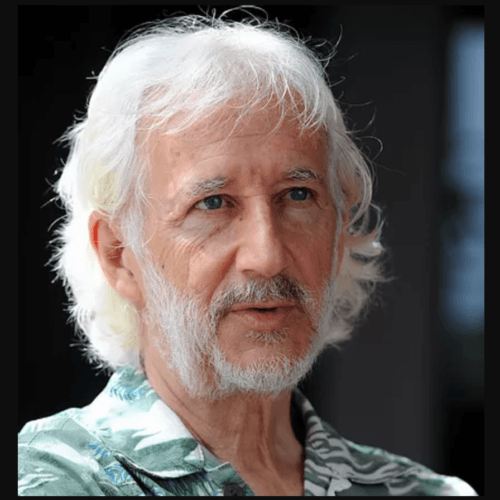
Phil Maffetone
Phil Maffetone is a coach and health practitioner working in exercise, sports medicine, biofeedback, and nutrition. He’s an author of numerous books covering a number of aspects of exercise, sports medicine, biofeedback, nutrition. He has a bachelor’s degree in human biology and a doctorate in chiropractic, with certifications in physiotherapy, Chinese medicine, and kinesiology. Phil was a private sports practitioner and coach between 1977 and 1997, and now a consultant, writer, independent researcher, and lecturer.
Phil Maffetone,a fitness expert at the MIG Cricket Club,Bandra in Mumbai on Friday.


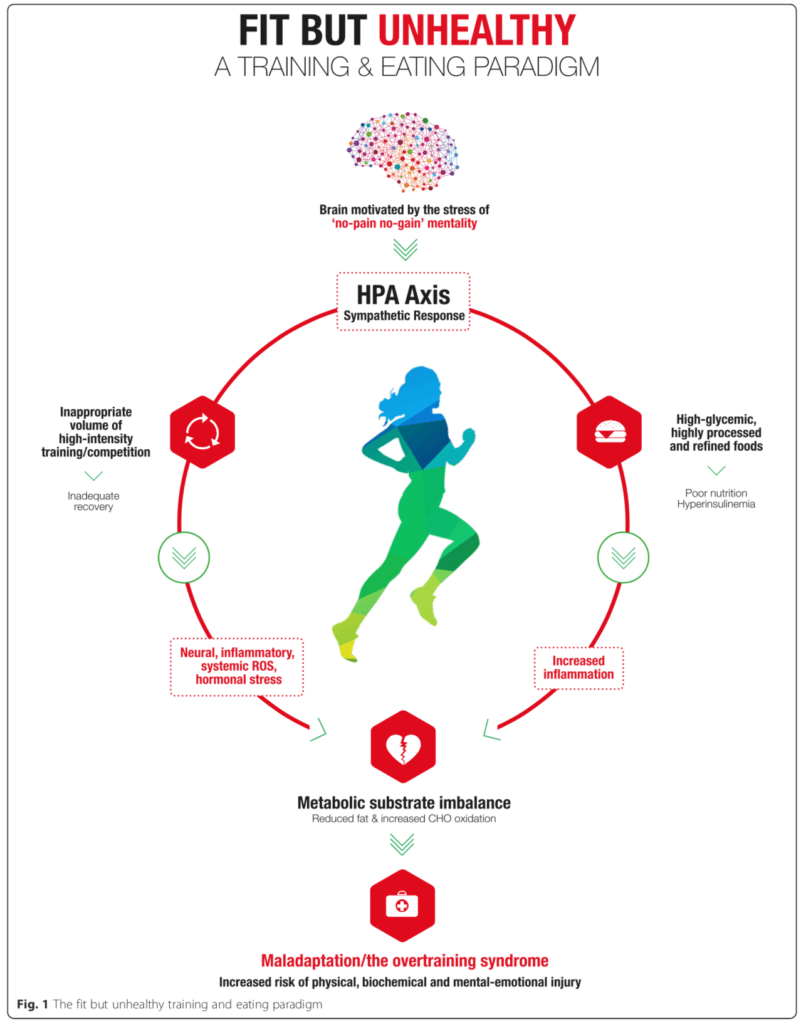
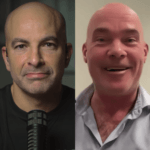
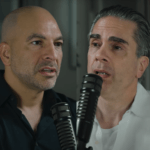
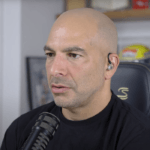

I thoroughly enjoyed this podcast. it reminds me that I need to get back into MAF training as I have tried it a couple years ago! It was interesting when Phil was talking about how he changed the phrase ‘Insulin Resistant’ to ‘Carbohydrate Intolerant’ because people could understand things better from the carb angle. On a side note, I was laughing out loud when Peter was talking about when he was young and would eat so much food at that age (13-18) when your body is indestructible in terms of what you eat/how you train. It reminded me that I just need to LOOK AWAY at the obscene amounts of food/types of food my 3 teen/tween boys inhale on the regular while I am fairly vigilant about carb intake, caloric intake, and intermittent fasting. Such a big contrast in one household!
Hi Peter, and Phil,
Well done podcast! Thanks!!
Any thoughts on using calisthenics as a means of implementing the 180 formula? Let’s say one rotates through 3 pushups, 3 squats, 3 inverted rows, and 3 leg raises continually. Do you see that as a good strategy to get the results similar to one who implements the 180 formula via running, biking, or swimming?
Thank you,
John R.
Is it possible that some humans genetically respond negatively to anaerobic exercise? Such as induced chronic inflammation?
Pretty much all my life (age 18-35) I’ve had enjoyed lifting weights and I easily get in shape when continuing doing so but it always makes me feel absolutely horrendous mentally. I’ve tried on and off for years as I keep telling myself it must be something else triggering my malaise but I cannot fool myself any longer.
Even as little as light weight training 3 days a week will trigger:
– Massive brainfog 1-2 days after the exercise that lasts for days to weeks.
– Forces me to sleep at least 10 hours for days post exercise.
– Sometimes even trigger a fever the day after.
– Last time I pushed too hard I started having new odd symptoms such as heart murmurs and light sensitivity and were later diagnosed with chronic dry eye disease, photophobia, mild MR and TR MVP, mild OSA and a few other minor things.
I wish I had listened to my body earlier. I had a perfect stress-free life before when I was not working out as much. Now I stick to yoga, stretching and long walks and I feel okay except that I am stuck with the annoying chronic issues.
Hi Drs Maffetone, and Attia. Great show!
Should one vary the 180-age (with modifications) formula if max heart rate is well above 220-age, and above other max heart rate formulas? I’m 44 and my max heart rate is currently 189 (resting is about 58). Does that have any influence on the MAF, or none? Just feels like I’ll be getting very little pace at a HR of 136, but maybe that’s the whole point, at the beginning. Thanks!
Jason
Honestly, I’m a little surprised Peter didn’t get into the weeds more on this one. Maffetone’s formula is at best a rough heuristic or rule of thumb. Metabolically and physiologically he is trying to get at “fat max” intensity. This is all MUCH better discussed in Peter’s podcast with Inigo San Millan. I asked San Millan point blank on Twitter about Maffetone’s formula and his response is that it is not very accurate or valid based on his extensive experience with metabolic cart (gold standard) testing. For some people, they are burning no fat at that heart rate, others are still below their fat max. Anyone with experience working with real biological data should be immediately suspicious of dogmatic adherence to such a simplistic formula (for instance, fretting about being 2 beats over hypothetically) if the goal is really to personalize to individual physiology.
The people who benefit and stick with Maffetone are the one’s where the formula is doing a good job, but for many it is too far off and leads to unproductive training.
These folks at Uphill Athlete have a far more rigorous self assessment you can use based on cardiac drift/uncoupling, which seems to be the best poor man’s version of a proper metabolic cart test:
https://www.uphillathlete.com/heart-rate-drift-test/
You will notice that they make it *very clear*, contrary to what Maffetone says here, that as you develop aerobically, your aerobic threshold (i.e. fat-max) heart rate increases.
HTH
Thanks Chris. I’ll check out that link. Totally agree on the simplistic one-size-fits-all formula.
Another informative listen. I am 63 and now my daily walks turns out is all I need for that Steady State fat burn [117 beats per min]. I do three heavy weight sessions in the gym per week and one VO2 max run every 7-10 days so I feel I am well armed for successful aging. Thankyou Peter.
MAF has helped so many people, generally, as long as they follow it, but the underlying metabolic validity seems to be lacking, compared to the cohort of athletes who have access to serum lactate testing in the context of controlled exercise lab protocols.
Would it be oversimplistic to think of Maffetone’s recommendation to be more or less accurate, but not as precise as a prescription derived from a knowledgable treadmill/ergometer evaluation that includes gas exchange and lactate level testing? Surely the data from the latter would provide the more specific target training intensities (which may be subsequently matched to specific speeds, power levels, HR etc for the athlete to use for training in the field). It’s not that the desired results are different — it’s just that most people don’t have the resources to investigate the actual metabolic data points they really want, in which case the Maffetone work around is a really solid second best.
Maffetone has a “doctorate in chiropractic, with certifications in physiotherapy, Chinese medicine, and kinesiology”.
Translation: Quack.
Who’s next on the podcast Peter? Dr Oz? Jenny McCarthy?
A low point in an otherwise legit-seeming podcast series.